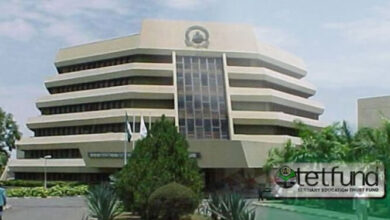Zenith Bank’s Leviathan Profit Volume

By wider margin than ever to its closest rival ,Zenith Bank’ recent net profit further confirms its dominion in the banking industry
Ebenezer Onyeagwu ,CEO, Zenith Bank ,no doubt has special flair for discerning and taking advantage of swath of opportunities out there even where others complain of none . Despite the prevailing deleterious environment, Zenith Bank, Nigeria’s biggest bank by profitability and the most valuable bank ,had gross earnings lifted by 10% to N765.56b from N696.45b in the financial year 2021 .The growth of its gross earnings was on the back of 23%YoY growth in non-interest income from N251.7billion to N309billionand a 2%YoY growth in interest income from N420.8billion to NGN427.6 billion
That is not all. It also goes a long way to confirm that the bank’s profit engine is equally superb ; against all odds, the bank wrenched up bottom line by 6% with a deft application of management’s experience beginning from leveraging net interest income to reassert that long standing leadership . In an absolute term , that is a whooping sum of N244.56b after the tax man has been settled
The feat registered is more unique than ever . By this ,the bank further confirms its leadership by profitability in clearer term , leading its closest rival ,Guaranty Trust Holdings Company ,GTCO, which declared a net profit of N174,84b by longer distance ever by 40%. Moreover ,last year, it added other two laurels as it took over as the most valuable and most capitalized bank by equity to dislodge GTCO which formerly occupied those slots
The outstanding performance has thrown its shareholders into celebrating galore They are ,indeed, excited by the recent feats of their bank. Moreover , Tier 1 lender Zenith Bank Plc is set to pay shareholders N97.32 billion total dividend for the financial year 2021, translating to N3.01 per share, after getting shareholders to agree to a dividend payout of N87.91 billion for the second half of the year, which translates to N2.80 per share.The bank had earlier paid an interim dividend of N0.30 per share totalling N9.4 billion for the first half of the year. It paid shareholders N3.0 per share, summing up to N94.19 billion in 2020
But its latest performance may not be farfetched ;though the environment is paved with critical obstacles, the bank’s core competence in the business of maturity transformation which ,no doubt , is unrivalled in the industry is the bank’s critical success factor . By hauling up net interest income by 7% to N320.80b from N299.68b , Zenith Bank showed that it’s not what you get but what you make out of it that matters. Though ,interest and similar income had increased marginally by 2percent to N427.60b from N420.81b , a potential spoiler, but after suppressing interest and similar expenses by 12% to N106.79b from N12131b , net interest income, which is a guide to how well a bank manages the interest rates it pays for borrowing and lending, jumped many paces to give a positive and better outlook to pre-tax profit. However, net interest margin declined from 7.9% to6.7% in the current year due to lower yields on held-to-maturity (HTM)investment securities.
The feat achieved by Zenith Bank was threatened and weakened a 51.6%% increment in Impairment loss on financial and non-financial instruments to N59.93b in 2021 compared to N39.53b in 2020 ,a fall in other operating income by 25.9%5 to N37.59b from N50,74b and an increase in operating expenses by 22% to N180.56b from N147.85b within the period under review .
Despite those threats, its profit before tax of the leading bank buoyed by 10%from NGN255.9 billion to NGN280.4 billion in the current year. The increase was due to growth in the top-line and very strong management of its treasury portfolio that increased efficiency, resulting in a drop in interest expense by 12%from NGN121.1 billion in 2020 to NGN106.8 billion in the current year.
No doubt , that huge impairment loss provision , hike in the operating expense and a big fall in other incomes impacted on its profit margins albeit marginally . This bank’s pre-tax profit margin backtracked to 36.6 percent from 36.7%
Even with that rise in pre-tax profit and the bank’s net profit that flew 6percent to N244.56b from N230.57b in the period, its net profit margin still down to 31.9percent from33percent. However, these figures are still very competitive making the final year 2021 result is another proof that reaffirms its leadership of the sector.
To cement its place as the most profitable and valuable bank, it improved its Earnings per Share (EPS) which grew by 6% from NGN7.34 to NGN7.78,however, returns on equity and assets reduced from 22.4% to 20.4% and from 3.1% to 2.7% respectively due to the significant growth in the balance sheet.
BALANCE SHEET OUTLOOK
The bank’s balance sheet was robust as the loan to deposit ratio, liquidity ratio and capital adequacy ratios were 54.1per cent, 71.6.0 per cent and 21 per cent respectively, all well above the regulatory threshold. The capital adequacy ratio reduced from 23% to 21%while liquidity grew from 66.2% to 71.6%.Both prudential ratios are still well above regulatory thresholds.
Moreover , Zenith Bank’ balance sheet till remains one of the most diversified and robust in the industry today. The bank’s total assets, driven mainly by growth in customers’ deposits, grew by 11per cent to N9.45trillion from N8.48 trillion in the preceding year while shareholders’ fund grew by 15 per cent, to N1.28trillion N1.12trillion in 2020 . But it was the bank’s ability to meet and surpass regulatory guidelines that was the highlight of the full year results.
CREDIT QUALITY
With the steady recovery in economic activities, the Group prudently grew its gross loans by 20%, from NGN2.9 trillion in 2020 to NGN3.5 trillion in 2021with moderated NPL ratio from 4.29% to 4.19%YoY.Despite this ,the bank’s non-performing loans ratio, however, decreased marginally to 4.19 per cent in 2021 from 4.29per cent in 2020 .This is still within the regulatory threshold and far below industry peers.
The above feat could be traced to its strong cost of risk figure .Though it increased marginally to 1.9 per cent as against 1.5 per cent in 2020 ; this cost of risk figure is one of the industry best and a demonstration the bank’s robust risk management framework. Moreover .this was achieved despite the huge increased in impairment charge by 51.6% , re-affirming the bank’s enhanced asset quality. In the same breadth, coverage ratio increased by 1 per cent to 114.4 per cent to 113.9 per cent over the same period, an indication of prudent disposition consistent with the bank’s known record of excellent credit risk management
CUSTOMERS DEPOSIT
For such weighty shareholders’ fund, it is natural to pull in heft deposits as total Customer deposits increased by 21%,growing from NGN5.34 trillion in the previous year to NGN6.47trillion in the current year. The growth in customer deposits came from both our corporate and retail customers, with retail deposits continuing to grow, up by NGN146billion from NGN1.72 trillion in 2020 to NGN1.87 trillion in 2021. The Group’s continuous drive for retail deposits combined with the strategic rebalancing of its funding base helped to reduce cost of funding from 2.1% to 1.5% in the current year The results were a testament of the bank’s efforts to deepen its roots in the retail segment. This has led, in the main, to a remarkable increase in the volume of transactions across various electronic platforms as well as significant customer acquisitions. This growth in transactions on the bank’s digital channels continues to support the bank’s retail push as fees from e-products increased in2021 with retail deposit balances also growing . The bank also stated that it would continue its investment in the retail end of the market to consolidate its leadership in both the corporate and retail segments.
.EFFICIENCY
As a result of the significant improvement in efficiency, the bank’s cost-to-income ratio settled flatly at 50.8per cent from 50.0per cent in 2020 .Operating expenses grew by 13% YoY but growth remains below the inflation rate.
In 2022, the Group intends to consolidate on the gains achieved in the previous year in all business segments and combine leadership in the industry, innovation and technology to drive improved performance and deliver enhanced returns to all stakeholders
Speaking on the performance for that financial year, Chairman, Jim Ovia, assured shareholders of the bank’s commitment of continuing to deliver superior returns in the years ahead. Ovia said Zenith Bank remains a clear leader in the digital space, with several firsts in the deployment of innovative products, solutions and an assortment of alternative channels that ensure convenience, speed and safety of transactions. “To continue to cater to the varied appetites of our customers in a constantly changing world and stay ahead of the competition, therefore, we have invested massively in new technologies and innovative solutions in the last financial year. This is geared towards ensuring that we continue to provide best in class quality services that create value for all our stakeholders,” he said, noting that Zenith Bank made significant progress in the adoption and integration of sustainable banking principles into its business, especially in its credit administration process.
Consistent with this excellent performance and in recognition of its track record of stellar performance, the bank was recently ranked as the Most Valuable Banking Brand in Nigeria in 2018 by The Banker Magazine. Similarly, Zenith Bank was recognised as the Best Corporate Governance Bank in Nigeria by The World Finance for the sixth time just as Ethical Boardroom, a Europe based Boardroom watchdog reaffirmed this recognition by naming Zenith Bank as the Best Bank in Corporate Governance in 2018. Recognition has also come the way of the bank as it was recently named the Best Institution in Sustainability Reporting in Africa 2018 (SERAS Awards) and the Bank of the Year 2018
The bank has promised to perform better .According to the bank, its outlook for 2019 is positive, supported by improving macroeconomic conditions, relative exchange rate stability, and expected stability in the oil market




